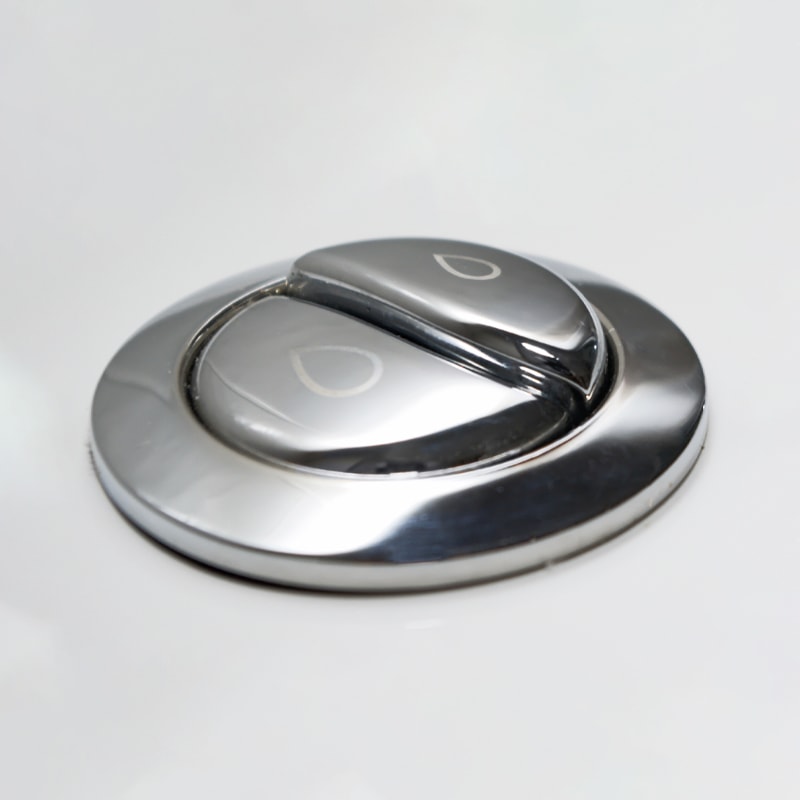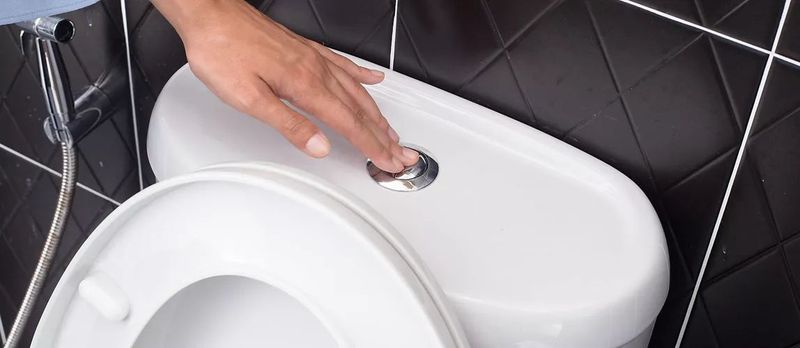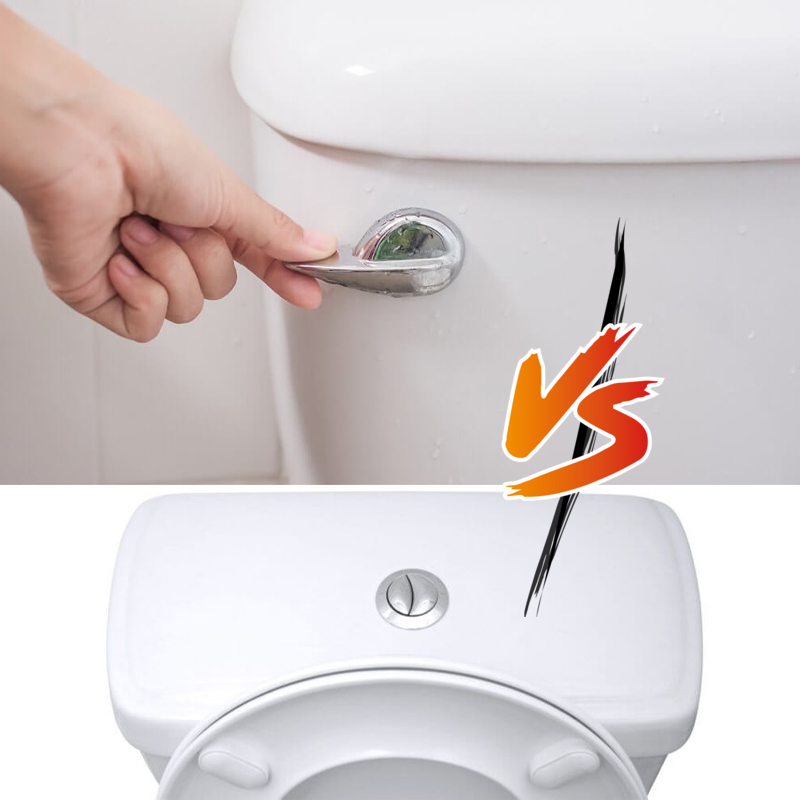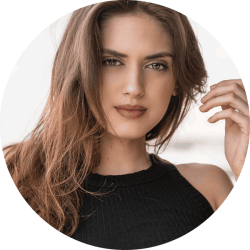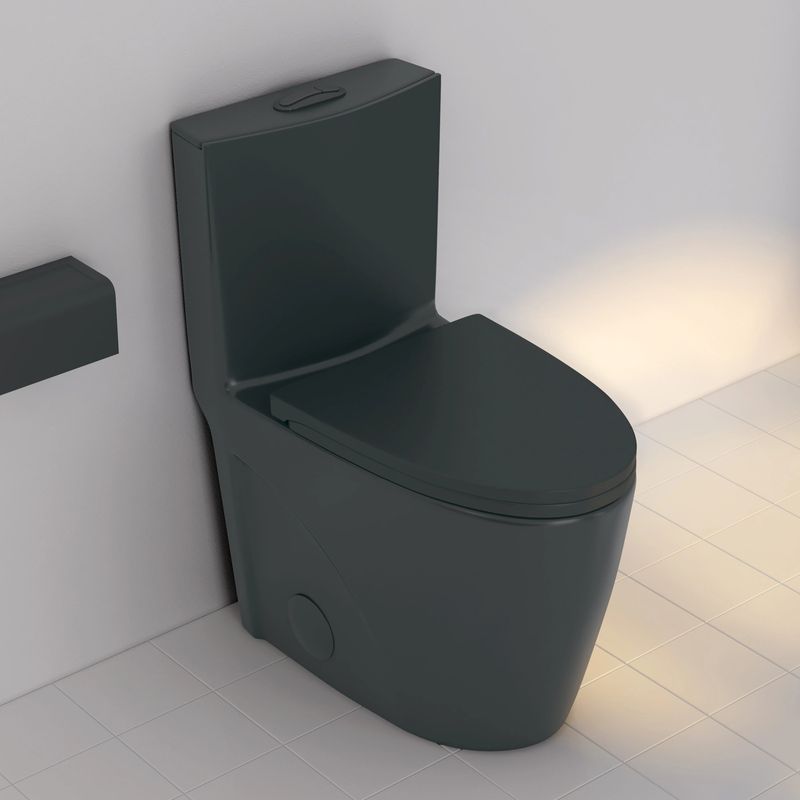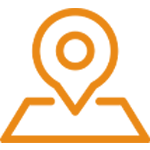 English
English
Jabra Sanitary is a sanitaryware supplier offering toilets, sinks, faucets, bathtubs, etc., at competitive prices. If you're a distributor, wholesaler, or project contractor, get a quote today!
 $23.9 Limited-time Offer
$23.9 Limited-time Offer Consignment Policy
Consignment Policy 20 Years of Experience
20 Years of Experience
A dual-flush toilet is an excellent option for saving water without compromising performance.
If you're unsure whether you should buy a double flush toilet for your home, read on to learn about what is a dual flush toilet, how do dual flush toilets work, and single vs dual flush toilets.
We'll also explore dual flush toilets pros and cons to help you make the right choice.
Table of Contents
What is a Dual Flush Toilet?
How Does a Dual Flush Toilet Work?
Single vs Dual Flush Toilet
Dual Flush Toilet Pros and Cons
FAQs
Bottom Line
A dual flush toilet is an innovative plumbing fixture designed to offer two flush options: a low-volume flush for liquid waste and a full-volume flush for solid waste.
This type of toilet is engineered to conserve water, providing users with a choice between a partial flush (typically using around 0.8 gallons of water) and a full flush (using approximately 1.6 gallons of water). <Check 1.28 gpf vs 1.6 gpf toilets>
The dual flush mechanism is environmentally friendly and helps reduce water usage, which is particularly beneficial in regions experiencing water scarcity.
About 30% of household water usage comes from flushing toilets. By switching to a two flush toilet, significant water savings can be achieved. For example, a family of four can save roughly 16,500 gallons of water annually with a dual flush toilet.
Dual flush toilets operate with a dual-lever or dual-button system, allowing users to select the appropriate flush volume.
The smaller button or lever triggers a lower flush volume, ideal for liquid waste, while the larger button or lever initiates a full flush which means high volume flush for solid waste.
This mechanism involves a specially designed flush valve and trapway that controls the amount of water released from the tank to the bowl.
The two button flush toilet's efficient design ensures effective waste removal while minimizing water consumption. So, don't worry about dual flush toilet not flushing completely.
Single vs Dual Flush Toilet
Which is better? Dual flush or single flush? Check the difference between dual flush and single flush toilets below.
1. Single or Dual Flush Toilet: Water Usage
Single flush toilets use a consistent amount of water, typically around 1.6 gallons per flush (GPF), regardless of the type of waste.
In contrast, 2 flush toilets provide two options, often 0.8 GPF for liquids and 1.6 GPF for solids.
This variability significantly reduces water usage, particularly in households where liquid waste is more common. Over time, dual flush water saving toilets can save thousands of gallons of water annually.
2. Single Flush Toilet vs Dual Flush: Cost Comparison
While dual flush toilets are generally more expensive upfront compared to single flush models, they offer long-term savings on water bills due to reduced water consumption.
The initial investment in a dual flush toilet can be offset by the decreased utility costs, making it a cost-effective choice in the long run.
3. Dual Flush vs Single Flush Toilet: Environmental Impact
Dual flush toilets have a positive environmental impact by conserving water, a precious natural resource. Reduced water usage translates to lower energy consumption for water treatment and distribution.
By installing dual flush toilets, households and businesses contribute to sustainability efforts and help mitigate the effects of water shortages.
4. Dual Flush vs Single: Cleaning and Maintenance
Both single and dual flush toilets require regular cleaning to maintain bathroom hygiene.
However, the advanced flushing mechanism in dual flush toilets can sometimes be more complex, potentially requiring more frequent maintenance.
Common issues include problems with the flush valve or buttons, but these are typically easy to fix with proper maintenance.
5. Single Flush vs Dual Flush: Performance and Effectiveness
Dual flush toilets are highly effective in waste removal, with their design ensuring efficient flushing for both liquid and solid waste.
The dual flush system minimizes the risk of clogs and provides reliable performance. Single flush toilets, while effective, may not offer the same level of water conservation or efficiency.
6. Toilet Single Flush vs Dual Flush: Function and Complexity
The single flush toilet uses the same amount of water for every flush, regardless of the waste type. It is easier to use with a straightforward flushing mechanism.
While the dual flush system toilet offers two flushing options: a low-volume flush for liquid waste and a higher-volume flush for solid waste.
This two button toilet is slightly more complicated to use and install compared to single flush systems.
Feature |
Single Flush |
Dual Flush |
|---|---|---|
Water Usage |
Same for all flushes |
Variable (less for liquid, more for solid) |
Upfront Cost |
Lower |
Higher |
Maintenance |
Simpler, cheaper |
Potentially more complex, costly |
Water Efficiency |
Lower |
Higher |
Environmental Impact |
Higher water usage |
Lower water usage |
Ease of Use |
Very simple |
Slightly more complex |
Dual Flush Toilet Pros and Cons
Pros:
- Water Conservation: Significant reduction in water usage.
- Cost Savings: Lower water bills over time.
- Environmental Benefits: Reduced strain on water resources and lower energy consumption for water treatment.
- Versatility: Two flush options tailored to the type of waste.
- Modern Design: Often features sleek, contemporary aesthetics.
Cons:
- Higher Initial Cost: More expensive than single flush toilets.
- Complexity: May require more maintenance due to the advanced flushing mechanism.
- Compatibility: Not all existing bathrooms may easily accommodate dual flush toilets without modifications.
- User Learning Curve: Some users may need time to adapt to using flush toilets with two buttons on top.
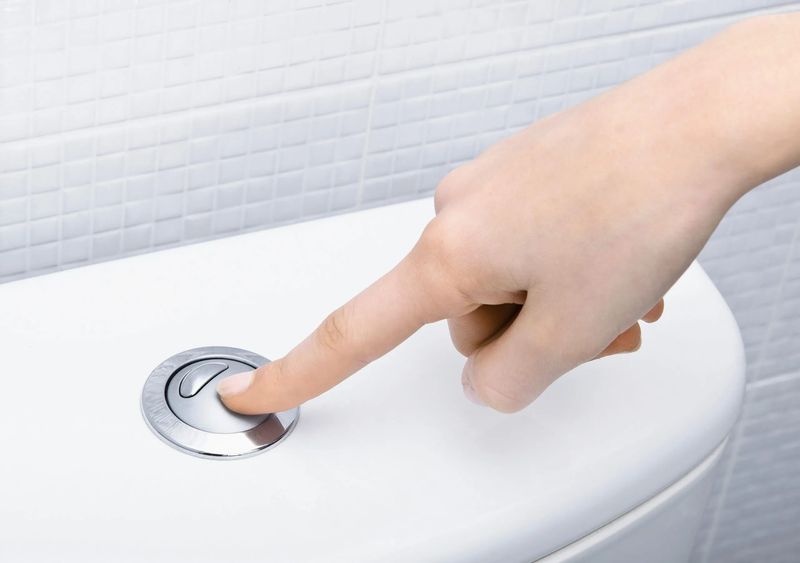
FAQs
What is the difference between a half flush and a full flush?
The half flush option of toilet uses half the amount of water compared to the full flush and is ideal for liquid waste. On the other hand, the full flush is specifically designed to effectively dispose of solid waste.
Are There Any Government Regulations or Incentives Related to Installing Single Flush or Dual Flush Toilets?
Yes, many governments and municipalities offer incentives for installing water-efficient fixtures like dual flush toilets. These incentives may include rebates, tax credits, or discounts on water bills.
Regulations often mandate the use of low-flow toilets in new constructions to promote water conservation.
What Are Some Common Maintenance Issues That Can Arise With Single Flush and Dual Flush Toilets?
Common issues for both types include leaks, clogging, and problems with the flush mechanism. <Learn how to fix a leaking toilet tank>
Dual flush toilets may also experience issues with the dual-button or lever system. Regular maintenance and prompt repairs can mitigate these problems.
Can Single Flush and Dual Flush Toilets Be Easily Retrofitted Into Existing Bathrooms?
Retrofitting is generally possible, but the ease depends on the existing plumbing and bathroom layout.
Dual flush toilets may require more modifications due to their advanced mechanism. Consulting with a professional plumber can ensure a smooth retrofit process.
Are There Any Specific Brands or Models of Single Flush or Dual Flush Toilets That Are Highly Recommended?
Reputable brands for dual flush toilets include Toto, Kohler, American Standard, and Jabra Sanitary known for their durability and efficiency.
For single flush toilets, brands like Mansfield and Gerber offer reliable options. Researching customer reviews and ratings can help identify the best model for your needs.
How Do Single Flush and Dual Flush Toilets Compare in Terms of Water Usage and Potential Savings on Water Bills?
Dual flush toilets offer significant water savings due to their dual-flush capability. Households can save up to 67% of water used per flush, leading to substantial reductions in water bills.
Single flush toilets, while effective, do not offer the same level of water conservation.
Bottom Line
Are dual flush toilets better? When comparing single flush vs. dual flush toilets, the dual flush option stands out for its water-saving capabilities, long-term cost benefits, and environmental advantages.
While the initial investment is higher, the dual flush system's efficiency in water usage makes the high efficiency dual flush toilet a sustainable and economical choice for modern bathrooms.
If you decide to purchase a dual flush integrated toilet, consider Jabra toilet as your first choice. The one piece dual flush toilet from Jabra Sanitary offer excellent value for money and reliable quality. You will benefit from efficient water-saving features and superior product performance.







